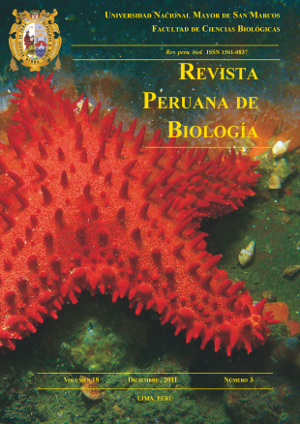Effects of metals on freshwater microcrustaceans. Metodological advances and potentiality of cladocerans and copepods as test organisms
DOI:
https://doi.org/10.15381/rpb.v18i3.460Keywords:
ecotoxicology metals zooplanktonic microcrustaceans, experimental designs.Abstract
The increase of metals in fresh water systems due to anthropogenic activities cause important alterations on the biota. The present review analyze the adverse effects of various metals of ecotoxicological relevance on microcrustaceans zooplankton species (cladocerans and copepods), the experimental advances and the advantages of each group as test organisms. In general, the need to obtain more sensitive and representative indicators than the tradicional ones leads to subchronic, interespecific and multigenerational studies. Additionally, the analysis of mixtures as well as their indirect effects allows to acquire more integral knowledges of the impact of contaminants. The toxic effects are different, depending on the nature of metals, the physicochemical characteristics of the water, exposutre time and genetic traits. However, most works are focused on few species, leading vacant areas on the knowledge of the representatives of every particular region. Despite some cladocerans and copepods atributes make them good bioindicators (size, morphology and ecological role), differences of development, reproduction and perpetuation strategies bring advantages to one group on another.Downloads
Downloads
Published
Issue
Section
License
Copyright (c) 2011 María Florencia Gutierrez, Ana María Gagneten

This work is licensed under a Creative Commons Attribution-NonCommercial-ShareAlike 4.0 International License.
AUTHORS RETAIN THEIR RIGHTS:
a. Authors retain their trade mark rights and patent, and also on any process or procedure described in the article.
b. Authors retain their right to share, copy, distribute, perform and publicly communicate their article (eg, to place their article in an institutional repository or publish it in a book), with an acknowledgment of its initial publication in the Revista Peruana de Biologia.
c. Authors retain theirs right to make a subsequent publication of their work, to use the article or any part thereof (eg a compilation of his papers, lecture notes, thesis, or a book), always indicating its initial publication in the Revista Peruana de Biologia (the originator of the work, journal, volume, number and date).






